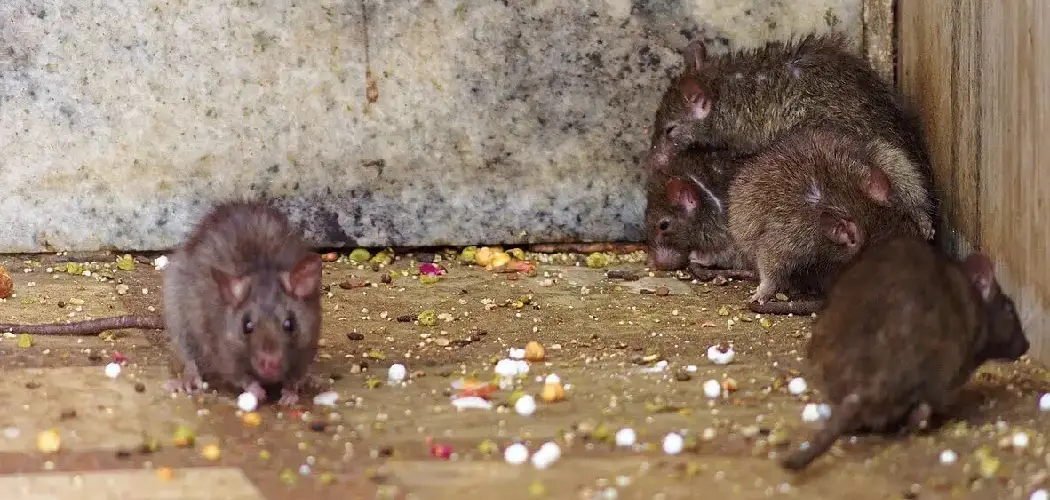Identifying the presence of rats within your walls can be crucial for maintaining a safe and sanitary home environment. Rats are notorious for being elusive and nocturnal, often making it difficult to detect their activity.
However, some common indicators can help you determine if these unwelcome guests have taken up residence. Listening to strange noises such as scurrying or scratching, especially at night, is a primary sign.
Additionally, finding droppings, bites marks on electrical wires, or unexplained holes in walls can further confirm their presence. Taking swift action upon detecting these signs can prevent extensive damage and ensure the safety of your household. In this blogpost on how to find rats in walls, we will discuss some effective methods for detecting and addressing a rat infestation.
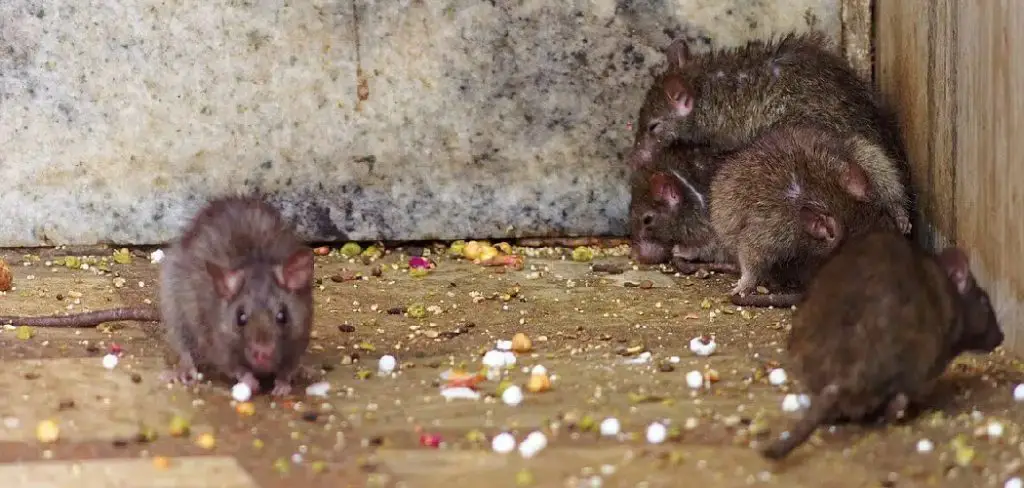
Why You Need to Get Rid of Rats in Walls?
Rats are not only a nuisance but also pose a significant threat to your health and safety. They can carry diseases such as salmonellosis, leptospirosis, and hantavirus, which can be transmitted to humans through contact with their droppings or urine.
Moreover, rats have sharp teeth that constantly grow, leading them to gnaw on various objects, including wires and insulation within walls. This behavior can cause fires or electrical malfunctions, putting your property at risk.
Therefore, it is essential to identify and eliminate rat infestations in walls promptly. Ignoring the problem can lead to extensive damage, potential health hazards, and an increase in the rat population.
Needed Materials
To effectively find and eliminate rats in your walls, you will need the following materials:
Flashlight:
Rats are nocturnal creatures, so using a flashlight can help you see inside dark crevices and spaces within your walls. Make sure to have extra batteries on hand in case your flashlight runs out.
Ladder:
Rats are agile climbers and can easily access high levels of your home through tree branches, utility lines, or gutters. Having a ladder will allow you to check all areas of your walls for potential entry points and signs of infestation.
Protective Gear:
Wearing protective gear such as gloves, goggles, and a face mask is crucial when inspecting walls for rats. This equipment will protect you from coming into direct contact with their droppings or urine, which can contain harmful bacteria.

8 Simple Step-by-step Guidelines on How to Find Rats in Walls
Step 1: Identify the Signs
The first step in finding rats in your walls is to accurately identify the signs of their presence. Begin by closely observing any unusual activity or disturbances in your environment. Listen for faint noises, like scratching, scurrying, or gnawing sounds, particularly during the night when rats are most active. Check for droppings, which are typically dark and cylindrical, in areas such as basements, attics, and behind walls. Look for gnaw marks on wood and electrical wiring, as these can indicate a rat’s attempt to wear down its continually growing teeth.
Additionally, keep an eye out for nests made of shredded paper or fabric, and watch for tracks or tail marks in dusty areas. By recognizing these signs, you can confirm the presence of rats and proceed with targeted measures to address the infestation.
Step 2: Inspect the Exterior of Your Home
Once you’ve identified signs of a rat infestation inside, the next step is to inspect the exterior of your home for potential entry points and vulnerabilities. Begin by examining the foundation, looking for cracks or holes larger than a quarter of an inch, as rats can squeeze through surprisingly small openings. Pay special attention to areas where utility lines, pipes, or cables enter the home, as these are common access points for rodents.
Additionally, check around doors and windows for gaps in weather stripping or broken seals and ensure that attic and roof vents are properly screened. Inspect your gutters and downspouts for debris or damage that could provide a pathway for rats. Finally, keep an eye on the vegetation around your house; trim back tree branches that touch your home and remove any dense shrubbery that may serve as a hiding spot. By thoroughly inspecting and securing the exterior, you can significantly decrease the likelihood of rats gaining entry into your walls.
Step 3: Use a Flashlight for Interior Inspection
After checking the exterior, it’s time to inspect the interior of your home. Start by turning off all sources of light and use a flashlight to search dark spaces within walls and behind furniture. Be sure to check corners, edges, and tight crevices where rats may hide or build nests. Remember to wear protective gear while conducting this step.
You may also want to try using a blacklight, as it can highlight rat urine and droppings that are invisible under normal light.
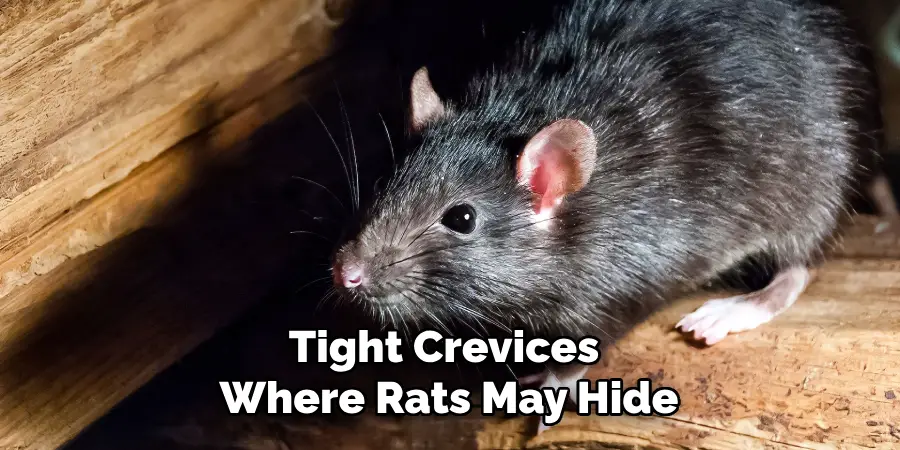
Step 4: Check Common Entry Points
Next, focus on areas of your home where you have noticed signs of rat activity or potential entry points identified in step two. Using the flashlight and protective gear, inspect these areas thoroughly for any additional evidence of rats.
It’s also important to check for holes or gaps in the interior walls, as these can provide access to rats moving between rooms. Additionally, electrical outlets and switches should be inspected for signs of gnawing, which can indicate that rats are using them as entry points.
Step 5: Monitor Activity
After conducting a thorough inspection, set up monitoring devices such as traps or cameras near areas where you have noticed rat activity. This will help you track their movements and determine if they are still present in your walls after taking preventive measures.
But remember, never use poisons or chemical deterrents in your walls as this can make rats die inside and cause unpleasant odors.
Step 6: Seal Entry Points
If you have found entry points during your inspection, seal them with a metal mesh or caulk to prevent rats from entering. For larger openings, consider using steel wool or wire mesh as these materials are more difficult for rats to chew through.
Remember that sealing potential entry points is an ongoing process and may need to be repeated if rats find new ways to enter your home.
Step 7: Use Traps
Trapping is an effective method of catching rats in walls. Place traps near areas where you have noticed activity, using bait that is appealing to rats such as peanut butter or dried fruit. Check traps regularly and remove any captured rats promptly.
It’s essential to use humane traps that will not harm or injure the rats, as this aligns with ethical and effective pest control practices.
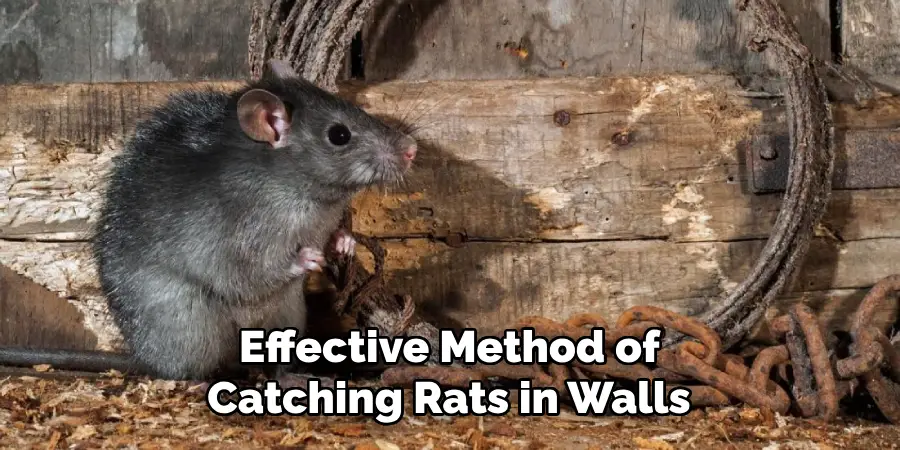
Step 8: Seek Professional Help
If you are unable to locate or effectively eliminate rats in your walls, it may be best to seek professional help. Pest control companies have the experience, knowledge, and tools necessary to handle rat infestations safely and effectively. They can also provide advice on how to prevent future infestations.
Following these simple step-by-step guidelines on how to find rats in walls can help you identify and address rat infestations in your walls before they become a significant problem. Remember to always prioritize safety and use humane methods when dealing with pests. So, it is essential to act promptly and diligently if you suspect rats may be present in your walls. By taking these measures, you can protect your home from damage and keep yourself and your loved ones safe from the potential health risks associated with rats. Happy hunting!
Additional Tips
Practice Cleanliness:
Keeping your home clean and clutter-free can discourage rats from settling in. Regularly tidy up storage areas, basements, and attics where clutter may accumulate and serve as potential nesting spots.
Manage Food Sources:
Store food in airtight containers and dispose of garbage promptly. Ensure pet food is not left out overnight, and clean up any spills immediately to reduce attractiveness to rodents.
Repair Leaks and Moisture Issues:
Rodents are attracted to sources of water, so fix any leaks or moisture issues in your home. This will not only help prevent potential rat infestations but also protect your home from water damage.
Be Vigilant:
Monitor your home regularly for any signs of rats, even if you have not noticed any before. Early detection is key to preventing a small rat problem from turning into a large infestation.
Frequently Asked Questions
Q: How Do I Know if There Are Rats in My Walls?
A: Signs of rat infestation include scratching or scurrying noises, droppings, chewed wires or furniture, and visible damage to walls or insulation.
Q: Can Rats in Walls Make Me Sick?
A: Yes, rats can carry and spread diseases through their droppings, urine, and bites. It’s essential to address rat infestations promptly to avoid potential health risks.
Q: How Can I Prevent Rats from Entering My Home?
A: Practicing cleanliness, managing food sources, sealing entry points, and regularly monitoring your home can help prevent rats from entering. Additionally, consulting with a pest control professional can also provide valuable insight on how to keep rodents out of your home. Remember that prevention is key when it comes to handling pesky pests like rats! So don’t wait until you have a full-blown infestation; take proactive measures to protect your home and health.
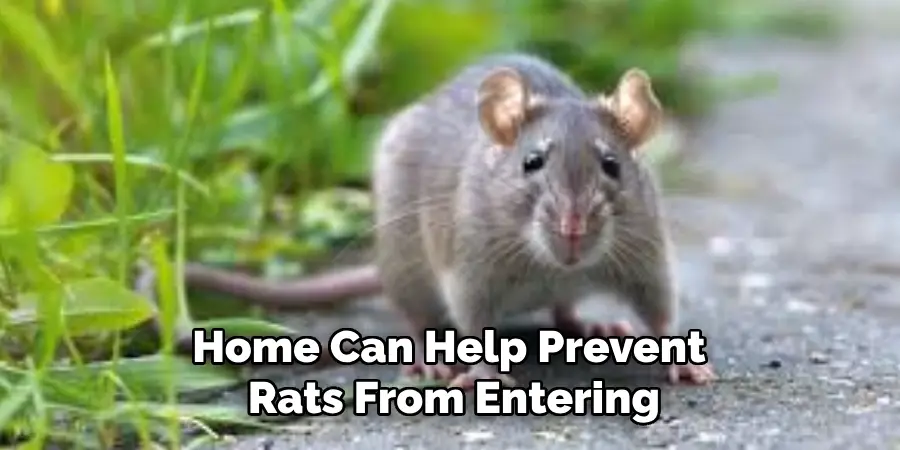
Conclusion
By following these steps and additional tips on how to find rats in walls, you can effectively locate rats in walls and take appropriate measures to address the issue. Remember to prioritize safety, use humane methods when dealing with pests, and seek professional help if needed. With diligence and preventive measures, you can protect your home from rats and keep your family safe.
So, be proactive in monitoring for signs of rat activity and take necessary steps to prevent them from entering your walls. Remember, early action can save you time, money, and hassle in the long run. Stay vigilant and stay rodent-free!
About
Angela is the chief editor of Indoorense. She began her career as an interior designer before applying her strategic and creative passion to lifestyle and home.
She has close to 15 years of experience in creative writing and online content strategy for housekeeping and cleaning,home decorations as well as other efforts.
She loves her job and has the privilege of working with an extraordinary team. She lives with her husband, two sons, and daughter in Petersburg. When she’s not busy working she spent time with her family.

